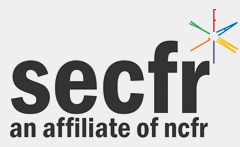Through the Eyes of a Child: Resilience and Children’s Literature
Proposal Focus
Practice
Presentation Type
Presentation
Abstract
This student presentation explores resilience on two levels; in the first instance it is the subject of a self published children’s book written by a student group. On a second level, resilience is observed on a meta-cognitive level, as a quality that the student publishers have to display to complete their task and reach a successful outcome, namely publication. Publication is a task none of them had undertaken before. Achieving professional publication is not guaranteed and the possibility of rejection of the manuscript is a distinct possibility. Resilience is defined as the capacity for positive adaptation, mastery and management of challenging situations and experiences. This presentation explores aspects of resilience through the journey of a fictional animal character, paralleled by the journey of the student authors who created the character and conceived the story. Resilience stems from countless variables including family, environmental factors, current events, and genetic predispositions. Ways to support resilience in children include responsive relationships, strengthening core life skills, and reducing sources of stress in the lives of children and families. In real life, resilience promoting behavior aims to prevent lasting harm to children and families. A stable environment, exposure to education or skill sets, and a support system are crucial factors in enhancing coping skills. To address some of these themes in a child-friendly manner, the student group in the parenting class wrote a children’s book, describing the resilience displayed by a young Giraffe, as he initially gets lost and ultimately finds a home. The steps the lead animal character goes through demonstrate resilience and can serve as a model in seeking out appropriate outcomes. The students hoped that the book contained lessons-to-be-learned for young school-aged readers, as it explored problem solving in difficult situations such as getting lost and seeking best outcomes. In producing the book, the lead student author (and also the presenter of this paper) had to stretch her own comfort zone. Just like the lead character in the children’s book she produced, the presenter had to overcome obstacles in the path towards ultimate professional publication and distribution, acquire appropriate skill sets, and seek and utilize support from significant persons who could mentor and guide her along the way. Similar to the lead character in the book, it was a journey that contained numerous obstacles, and situations that were daunting. Reflecting on the publication process, there were parallels with situations that may require resilient behavior, while also encouraging the student to reflect on her own role in reaching an acceptable outcome by not giving up, seeking appropriate support and utilizing new skill sets.
Keywords
parenting, resilience, children's literature
Location
Tiger I
Start Date
9-3-2018 9:15 AM
End Date
9-3-2018 10:00 AM
Through the Eyes of a Child: Resilience and Children’s Literature
Tiger I
This student presentation explores resilience on two levels; in the first instance it is the subject of a self published children’s book written by a student group. On a second level, resilience is observed on a meta-cognitive level, as a quality that the student publishers have to display to complete their task and reach a successful outcome, namely publication. Publication is a task none of them had undertaken before. Achieving professional publication is not guaranteed and the possibility of rejection of the manuscript is a distinct possibility. Resilience is defined as the capacity for positive adaptation, mastery and management of challenging situations and experiences. This presentation explores aspects of resilience through the journey of a fictional animal character, paralleled by the journey of the student authors who created the character and conceived the story. Resilience stems from countless variables including family, environmental factors, current events, and genetic predispositions. Ways to support resilience in children include responsive relationships, strengthening core life skills, and reducing sources of stress in the lives of children and families. In real life, resilience promoting behavior aims to prevent lasting harm to children and families. A stable environment, exposure to education or skill sets, and a support system are crucial factors in enhancing coping skills. To address some of these themes in a child-friendly manner, the student group in the parenting class wrote a children’s book, describing the resilience displayed by a young Giraffe, as he initially gets lost and ultimately finds a home. The steps the lead animal character goes through demonstrate resilience and can serve as a model in seeking out appropriate outcomes. The students hoped that the book contained lessons-to-be-learned for young school-aged readers, as it explored problem solving in difficult situations such as getting lost and seeking best outcomes. In producing the book, the lead student author (and also the presenter of this paper) had to stretch her own comfort zone. Just like the lead character in the children’s book she produced, the presenter had to overcome obstacles in the path towards ultimate professional publication and distribution, acquire appropriate skill sets, and seek and utilize support from significant persons who could mentor and guide her along the way. Similar to the lead character in the book, it was a journey that contained numerous obstacles, and situations that were daunting. Reflecting on the publication process, there were parallels with situations that may require resilient behavior, while also encouraging the student to reflect on her own role in reaching an acceptable outcome by not giving up, seeking appropriate support and utilizing new skill sets.
![Southeastern Council on Family Relations Conference [2018-2020]](/assets/md5images/a0d3661d5139dc9b769a57be6f085156.png)

